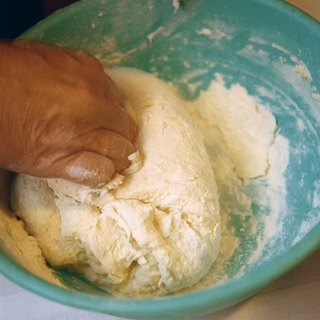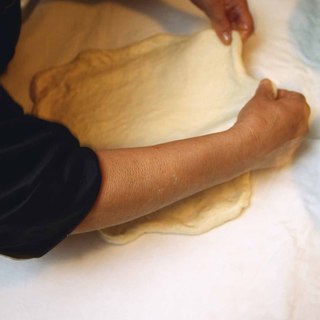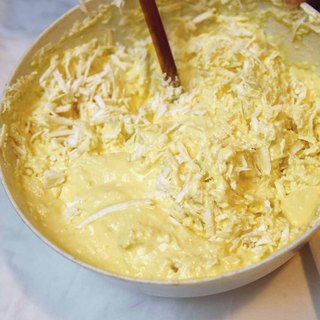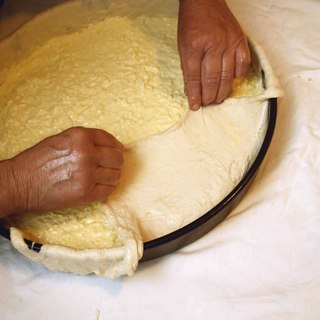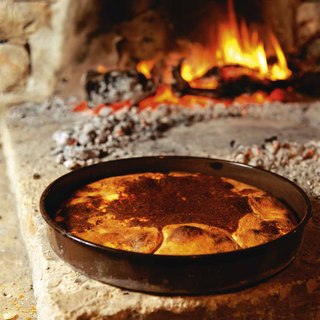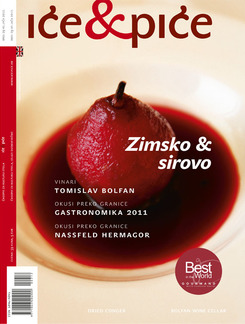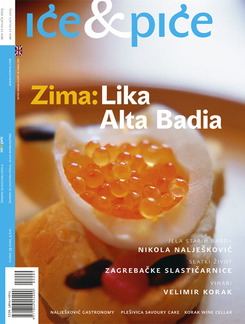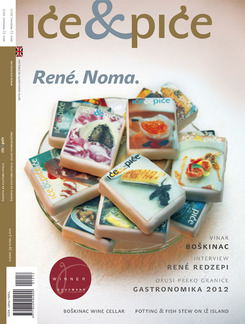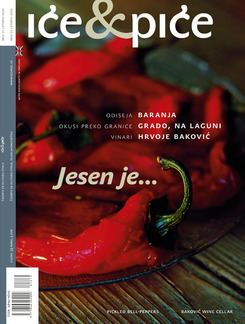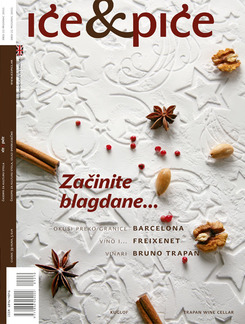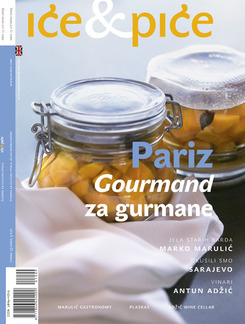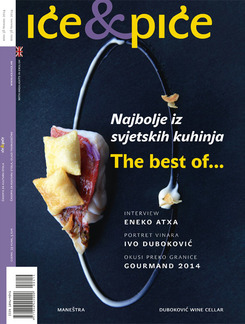Preparing this story about prisnac, that archetypal and primordial cake, I originally believed that it was a recipe exclusively from Ravni Kotari, but collecting oral material, from village, household to household, I became convinced that it was the same recipe, and so I called it pristeški prisnac, and added the recipe and manner of preparation of my great-grandmother Šinka, for only in this way can I be sure that I am conveying what prisnac is, in the traditional culture, and as part of the gastronomic heritage, and as an important vehicle of the identity of this farming people.
When it is to do with such a powerful phenomenon, known only from the family tradition, we are apt to believe that the story about prisnac never gets out of the framework of the down-home nest. But actually prisnac is surprising in that we can find it in practically all Croatian local cultures, and it makes up an essential part of the folk identity – almost like the interlacing (triple braid) ornament in the Middle Ages. We can find similar ingredients with various additions in the prisnac of Bribir, Brinje, the Sava valley and Bačka. And when I started thinking there was no sense in presenting it, according to my original intention, as an original cake of Ravni Kotari and Bukovica, prisnac surprised me once again. Accidentally or not, a French TV happened to be present at the ritual of its making in a traditional stone cottage on a lookout point over Vransko Lake. A young journalist revealed to me that this cake is made from the same ingredients and in a similar way in the traditional cooking of northern France. Whatever, anyone who has tried it, or can still remember it as the memory of his own childhood, respects it and elevates it over all the other specialities of the folk gastronomic tradition. Hence my experience is connected exclusively to great-grandma Šinka, and the ratios and quantities are conveyed as they were then, for the fifteen-member family she had.
The daughter-in-law’s place in the kitchen
At her time women made prisnac just once a year– on the Cross festival. At that time the crops in the field were blessed, and for a good yield, the procession with crosses and banners went round all the fields by the country paths. At the same time the housewives would be cooking cured ham shoulder with beans and pasta, and making the prisnac. The prisnac ingredients would be mixed in a big, oval wooden bowl, and the rolled pastry would be spread out over the heated hearth. Then the dough would be filled with the stuffing, and the ends would be wrapped up. Then the prisnac went under the baking bell, which got covered with embers and ash. Within the hour it took to bake, the lid of the bell was lifted several times and the prisnac was turned round so it didn’t burn. It was important to get the crust a kind of golden brown colour. When it cooled down, after lunch, it was shared out to the household members in equal parts. If there happened to be someone else’s child or a neighbour in the house at the time, they too would get a smaller bit to eat.
The woman of the house wouldn’t give over the privilege of making the prisnac or the whole business of making the food for the family community until she was incapable (or dead). In the hierarchy, the daughters-in-law were completely subordinate, and could only help in the preparation of the dough or the ingredients. The keys of the chest that hung around her waist were the signs and emblems of the goodwife’s power. In the chest, as well as the holyday attire, the cloth and yarn, would be the loaf sugar, the medicinal preparations, almonds and walnuts, dried figs, the odd lemon, orange or apple in case any of the members were sick. And all the daughters-in-law too had their own chests, essential parts of their dowry, but in them they could keep only their finery, and on the whole they were not locked.
Any complaint of the housewife about the conduct or actions of the daughter-in-law was a complete and final judgement, irrespective of her particular temper. The daughter-in-law then could start making her own prisnac only after the death of the old lady, when the brothers usually did the split-up and founded their own households. Recipes for prisnac were inherited, stuck to like the Scriptures, without any additions or subtractions, the way the old housewife had done. The new housewife did her best in the preparation of the other dishes too to keep up with the model of her predecessor, not daring to add anything she had learned in her parents’ house. Every change in the taste of the food would be an encroachment on the identity of the family heritage, and would be poorly received on the part of the other members.
Irrespective of this literal and consistent transfer of the recipe and of the ritual of preparation, the new housewife would never manage to make the same prisnac in all the details of its taste and smell. Rare would be the woman to get the recognition of making the prisnac better than the late housewife, though this too would sometimes happen. But it was impossible to check this out, since comparisons were not possible, and the new housewife was exposed to the quality of memory and subjective judgements of the household, and what is most important, she tended to agree with it herself.
Awakening tradition
One of the more important hindrances to the literal preservation of the original recipe was the absence of scales in the household, so that every woman had to have the touch in order to get the right taste. The sour cream would be collected for up to a month, everyday taking the cream from the milk, keeping it in a clay or later glass vessel with a lid. It is interesting that to get enough cream, a woman would have to have a flock of up to fifty sheep. Two cheeses would be prepared not long before the holiday of the Cross.
During the year, prisnac would never be made, for cream was used as the main addition and savour to many dishes – to wild cabbage, as a mix of pungent herbs was known, to potato and polenta. It was thus a feast that was prepared in an annual ritual for this same holyday. As well as prisnac, during Eastertide the household people were able to taste flat cake and doughnuts. There were no other cakes or dainties, and not even these were made on other days.
The tradition of making prisnac for this festivity was kept up until the 1970s. Then it was made at other times of the year, but since the tradition had gone into desuetude, only a few housewives preserved the skill and knowledge of its preparation. Interestingly, the life and career of Lucija Bogatić, an emigrant to America, was crucially marked by the prisnac. She prepared this exotic cake for a fine restaurant, and made a tidy sum from the profits. At the end of her life she repaid her home country, founding and equipping a local inpatients department.
Today you can find the prisnac of Ravni Kotari in the Šopot Tavern by Benkovac. It can be ordered in the rural household of Alojza-Lola Ćusa of Šopot, it is to be found in the package deal of rafting on the Zrnmanja river, and can be tried in some households that go in for rural tourism, and it’s easy to find such places on the Internet sites of the local tourist offices.
Of course every prisnac you make yourself or try out will have a different flavour, which is an important part of the personality of this primordial traditional dish.
